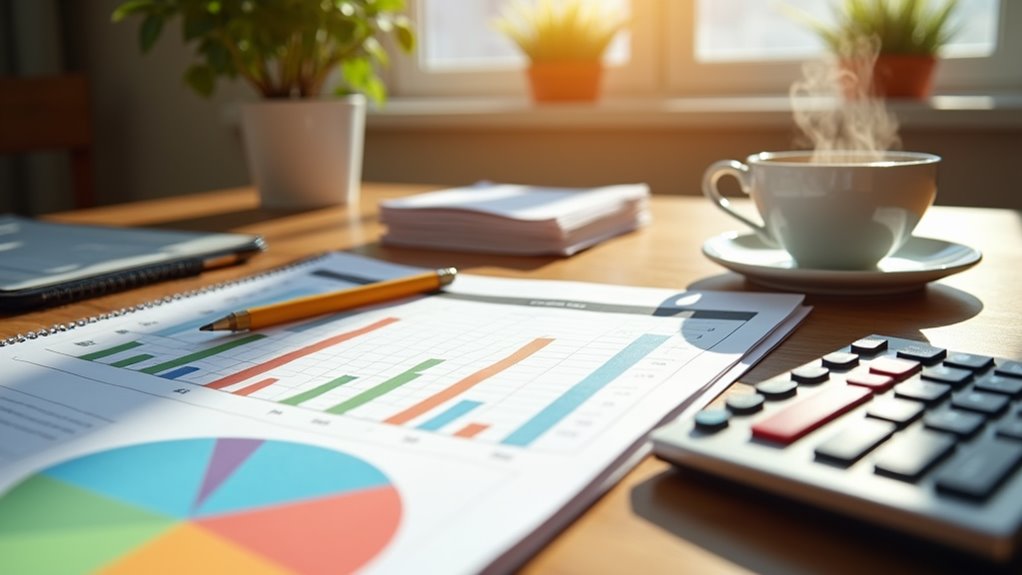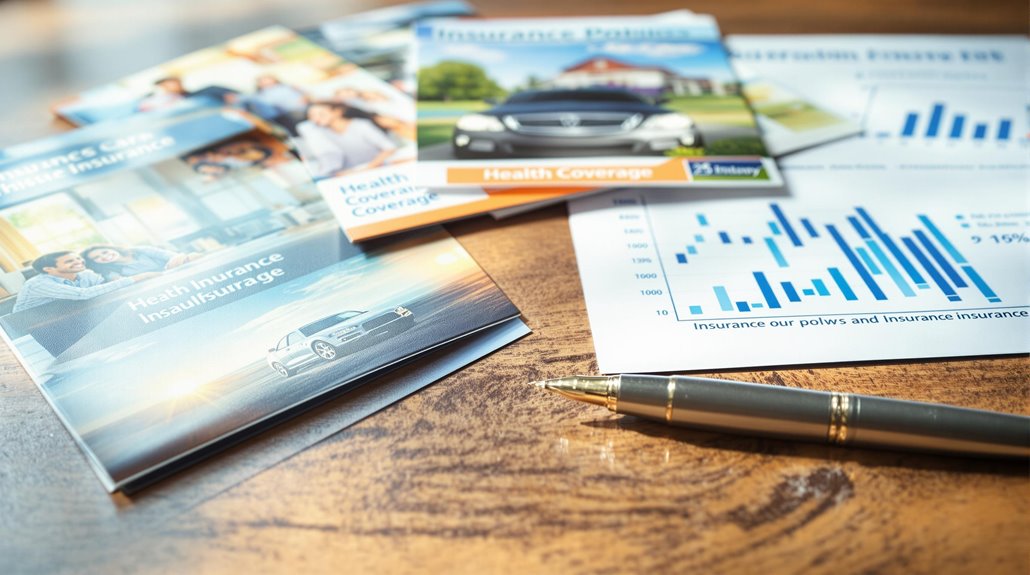
To transform your finances in just one year, start by setting clear financial goals that matter to you. Create a detailed budget that outlines your income and expenses, adjusting it as life changes. Build an emergency fund covering three to six months of living expenses, and don’t forget to start investing early to benefit from compound interest. These steps can set you on a solid path to financial well-being and lead to even more insights ahead.
Key Takeaways
- Set clear financial goals that are realistic and focus on a few key objectives to maintain direction and motivation.
- Create a comprehensive budget that outlines all income and expenses, helping you identify areas for improvement and reduce financial stress.
- Build an emergency fund covering three to six months of living expenses to protect against unexpected financial challenges.
- Start investing early to take advantage of compound interest, aligning your investment choices with your risk tolerance and financial goals.
- Regularly reassess your financial situation, adjusting goals and budgets as needed to accommodate changing life circumstances and priorities.
Set Clear Financial Goals

Things to Be Aware of: While setting financial goals is essential, it’s important to remain flexible and realistic about your targets. Life circumstances can change, and unexpected expenses may arise that could affect your ability to meet your goals on time. As a result, it’s wise to regularly reassess and adjust your goals as needed, rather than viewing them as rigid deadlines. Additionally, avoid setting too many goals at once, as this can lead to overwhelm and frustration. Focus on a few key objectives that truly matter to you and give yourself grace as you navigate your financial journey, remembering that progress can be slow but still meaningful.
Create a Comprehensive Budget

What it Looks like: A thorough budget is a detailed plan that outlines your income and expenses, allowing you to track your financial situation clearly and effectively. It typically includes various categories such as housing, utilities, groceries, transportation, entertainment, and savings. Each category should have a designated amount based on your financial goals and priorities. A well-structured budget can be created using spreadsheets, budgeting apps, or even traditional pen and paper. The key is to make sure that it reflects your actual spending habits while providing a clear roadmap for managing your finances.
Why It’s Smart: Creating a thorough budget is a proactive strategy that empowers you to take control of your financial future. It helps you identify spending patterns and areas where you might be overspending, allowing you to make informed decisions on how to allocate your resources more efficiently. By sticking to a budget, you can work towards paying off debts, saving for emergencies, and planning for future expenses. In addition, having a budget can reduce financial stress, as it gives you a clearer picture of where your money is going and how to adjust your spending to meet your goals.
Things to Be Aware of: While budgeting is an essential tool for financial management, there are some potential pitfalls to be mindful of. First, it’s important to be realistic about your income and expenses; underestimating costs can lead to frustration and abandonment of the budget. Additionally, life circumstances can change, requiring you to adjust your budget regularly to reflect new realities such as job changes, moving, or unexpected expenses. Finally, avoid being too rigid with your budget; allow for some flexibility to accommodate occasional splurges or emergencies without derailing your overall financial plan.
Build an Emergency Fund and Start Investing

What it Looks like: An emergency fund is typically three to six months’ worth of living expenses saved in a separate, easily accessible account. This fund should be dedicated solely to unexpected costs such as medical emergencies, car repairs, or job loss, allowing you to navigate financial surprises without derailing your budget. Starting this fund can be as simple as setting up an automatic transfer from your checking account to a high-yield savings account each month. In tandem with building your emergency fund, beginning to invest can take many forms, from contributing to a retirement account like a 401(k) or IRA, to exploring stocks, bonds, and mutual funds through brokerage accounts. The combination of these two financial strategies lays a solid foundation for long-term financial health.
Why It’s Smart: Establishing an emergency fund is an important step in achieving financial security. It offers peace of mind, reducing stress during uncertain times, and prevents you from having to rely on high-interest credit cards or loans. Furthermore, investing early allows your money to grow over time through the power of compound interest. The earlier you start investing, the more time your investments have to appreciate, which can greatly impact your wealth accumulation in the long run. By prioritizing both an emergency fund and investment, you’re not only safeguarding your immediate financial situation but also setting yourself up for future prosperity.
Things to Be Aware of: While building an emergency fund and investing are essential, it’s important to strike a balance between the two. Some may feel tempted to invest all surplus cash instead of prioritizing their emergency fund, which can lead to financial strain if unexpected expenses arise. Additionally, be cautious of the types of investments you choose; they should align with your risk tolerance and financial goals. Market volatility can affect your investment returns, so diversifying your portfolio and staying informed about market trends is vital. Finally, remember to periodically reassess your emergency fund needs as your lifestyle and expenses change, ensuring you’re always prepared for the unexpected.
RELATED POSTS
View all


